Product cost is used in cost accounting, providing valuable insights into a business’s financial health and operational efficiency. It encompasses all costs directly involved in producing a product, including raw materials, labor, and manufacturing overheads. To arrive at the cost of production per unit, production costs are divided by the number of units manufactured in the period covered by those costs. Prices that are greater than the cost per unit result in profits, whereas prices that are less than the cost per unit result in losses.
- In the vivid realm of accounting, absorption and variable costing are two different hues of the same color.
- COGS directly impacts a company’s profits as COGS is subtracted from revenue.
- But note that while production facility electricity costs are treated as overhead, the organization’s administrative facility electrical costs are not included as as overhead costs.
- A bit harder to calculate, time is a crucial factor to consider nevertheless.
- For each overhead item, state whether it is an indirect material expense, indirect labor expense, or other.
- Product cost and period cost are both important concepts in cost accounting, but they represent different expenses.
Managers may also want to concentrate on a product’s impact on a bottleneck activity. It means they are primarily concerned with the product’s direct materials cost and the time it spends in the bottleneck. Managers may change product costs to remove the overhead component when making short-term production and sale-price decisions.
Material cost refers to the commodities supplied to an undertaking, such as the cost of yarn and dyes engaged in manufacturing cloth. The beginning balances and purchases in each of these accounts are illustrated in Figure 4.8. Pranav Mittal, VP, Consumer Product at Hertz, highlights how innovative thinking is the difference between a company failing and succeeding. LogRocket identifies friction points in the user experience so you can make informed decisions about product and design changes that must happen to hit your goals. With LogRocket, you can understand the scope of the issues affecting your product and prioritize the changes that need to be made.
Labor Cost Calculation:
The selling price is now higher compared to costs per unit, resulting in profits. If the sale price is the same as the cost per unit, it is a break-even position, meaning there is no profit or loss. Divide the cost as stated above by the number of units produced to arrive at a per-unit cost. The process is not just a part of a business plan, but a process to keep restaurants profitable and restaurant food cost-efficient.
At the same time, Katana provides accurate information on how much it will cost to produce or purchase more products if needed. This feature helps you to optimize your inventory levels and improve your cash flow. Have you ever opened your banking app and been struck with a wave of panic? Or found yourself staring at your phone screen in utter bewilderment, wondering where all your money went? These are all-too-common experiences that can be easily remedied with a well-implemented product costing system. In reality, a third category of costs—semi-variable or semi-fixed costs—also exists.
Labor Cost (or Wages)
Product unit cost refers to the cost incurred to produce or acquire a single unit of a product. It includes the costs of labor, materials, and overhead allocated to each unit. Understanding the product unit cost is essential for pricing decisions and determining the profitability of individual products. Food costs percentage consists of dividing the price of goods sold and the profit/sale generated by these products.
What Is Design to Cost? An Overview With Examples
Product costs related to services should include things like compensation, payroll taxes and employee benefits. It’s important to include all related costs of manufacturing the product when you calculate product cost. For the chair example, components of product cost this would include the wood, nails, glue, and labor, among other costs. If these costs exceed the selling price of the chair, then your business is undoubtedly making a loss and needs to re-evaluate the product costing system immediately.
Finish Your Free Account Setup
While production volume might change, management does not want to stop production to wait for raw materials to be delivered. Further, a company needs raw materials on hand for future jobs as well as for the current job. The materials are sent to the production department as it is needed for production of the products.
Some items are more difficult to measure per unit, such as adhesives and other materials not directly traceable to the final product. Their costs are assigned to the product as part of manufacturing overhead as indirect materials. When Dinosaur Vinyl requests materials to complete Job MAC001, the materials are moved from raw materials inventory to work in process inventory. We will use the beginning inventory balances in the accounts that were provided earlier in the example. The requisition is recorded on the job cost sheet along with the cost of the materials transferred. The costs assigned to job MAC001 are $300 in vinyl, $100 in black ink, $60 in red ink, and $60 in gold ink.
This method is useful when a company wants to identify areas of inefficiency and reduce costs. This article delves into the intricacies of product costing to help you gain a deeper understanding of its importance. For a product startup, getting product costing right is more than critical.
Companies like Ford and General Electric began using cost management techniques to improve their operations and increase profitability. The distinction is essential because of the required treatment of the manufacturing costs for external reporting purposes, also known as Absorption Costing. Austin has been working with Ernst & Young for over four years, starting as a senior consultant before being promoted to a manager. At EY, he focuses on strategy, process and operations improvement, and business transformation consulting services focused on health provider, payer, and public health organizations. Austin specializes in the health industry but supports clients across multiple industries.
Returning to the example of Dinosaur Vinyl’s order for Macs & Cheese’s stadium sign, Figure 4.3.3 shows the materials requisition form for Job MAC001. This form indicates the quantity and https://business-accounting.net/ specific items to be put into the work in process. It also transfers the cost of those items to the work-in-process inventory and decreases the raw materials inventory by the same amount.
This analysis can be performed using labor-intensive spreadsheets or accelerated using manufacturing cost modeling software with precise, consistent estimates and real-world insights. Examples of pure service companies include accounting firms, law offices, real estate appraisers, business consultants, professional dancers, etc. Even though all of these industries have business expenses and normally spend money to provide their services, they do not list COGS. Instead, they have what is called «cost of services,» which does not count towards a COGS deduction.
Product cost, a crucial concept in cost accounting, refers to the total expenditure incurred to manufacture a product. This includes direct materials, direct labor, and manufacturing overhead costs. The direct material cost is the expense of the raw materials used in the production process. The unique nature of the products manufactured in a job order costing system makes setting a price even more difficult. For each job, management typically wants to set the price higher than its production cost.

